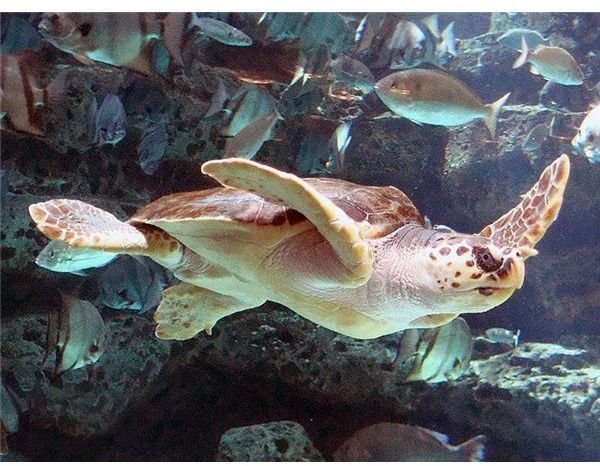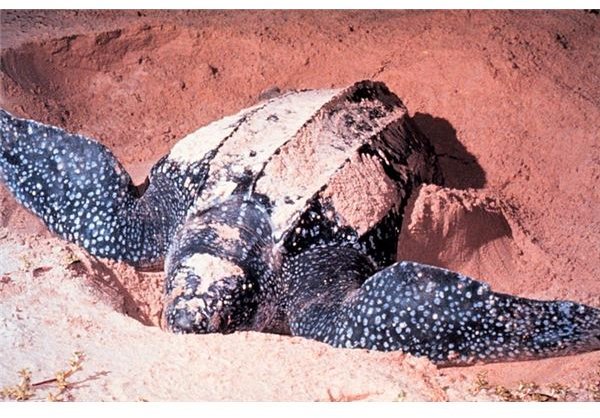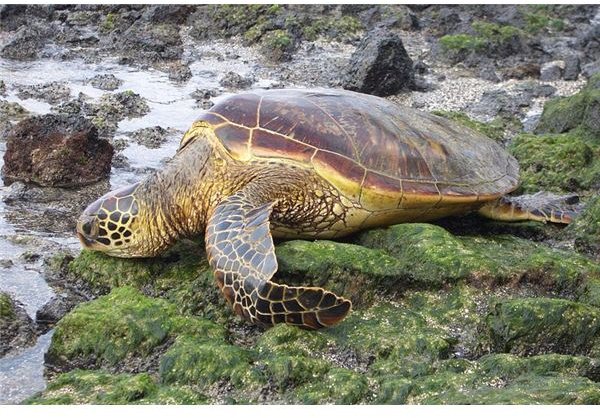Endangered Sea Turtles: Why Are They Endangered & How You Can Help Save Them
How many endangered sea turtle species are there? There are seven species of sea turtles.
These five of the seven species are listed as endangered or critically endangered:
- Green Sea
- Leatherback
- Hawksbill
- Kemp’s Ridley
- Pacific or Olive Ridley
The Leatherback, Hawksbill and Atlantic Ridley turtles are listed as critically endangered on the IUCN Red List.
According to Conservation International, sea turtles are categorized in two groups. Dermochelyidae has one species, which is the leatherback sea turtle. The Cheloniidae family comprises the remaining six species.
The seven species of sea turtles include flatbacks, which live on the continental shelf of Australia, Indonesia or the coast of Papua New Guinea. Colorful, flatbacks are yellow with grey or green and can weigh up to 198 pounds.
The hawksbill lives in the waters off Australia, Indonesia or along the coast of Papua New Guinea. It can breed on the southern region of the Great Barrier Reef. With its beak-like mouth, the hawksbill is indigenous to waters all over the world, including the Gulf of Mexico, Bahia, Hawaii, the Japanese archipelago, New Zealand, and northwest coastal Australia. Mature adults are about three feet long and weigh 350 pounds.
Green sea turtles are herbivores. They live on islands in the Caribbean, southern Atlantic, and along the eastern coast of the United States.
The biggest nesting grounds for the loggerhead turtle is South Florida and Masirah Island in Oman.

According to Green Packs, the leatherback turtle is the largest of the sea turtles; only crocodiles are larger reptiles. The largest known leatherback sea turtle weighed nearly 2000 pounds.
On the other end of the spectrum is Kemp’s Ridley, which is the smallest sea turtle. Adults are about three feet long and only weigh about 100 pounds.
Accounts vary, but sea turtles are believed to have lived on the planet for 110-to-120 millions years. Leatherbacks range the widest. They are found in every tropical and subtropical ocean, from Alaska, Norway to Cape Cod and New Zealand. These marine testaments to survival endured ice ages, out-lived the dinosaurs and every imaginable planetary catastrophe.
Catastrophe
According to Green Packs, sea turtles are mainly threatened by hunting for their meat and eggs, fat and shells. Commercial fishing techniques cause sea turtles to get trapped on fishing hooks, entangled in lines or to be crushed by dredges. Defenders of Wildlife warn that global warming is a special threat to sea turtles because the turtle’s sex depends upon the temperature at which the egg incubates. If global temperatures continue to rise, it is possible that only females would bear eggs that are incubated in sand above 88.6 degrees Fahrenheit.
Coastal storms such as hurricanes and cyclones intensify as global climate changes increase temperatures. Sea levels rise with melting Arctic glaciers. Both scenarios threaten turtle nesting beaches. Defenders of Wildlife warn that coastal development threatens turtle breeding habitats.
Hope

Every person can participate in the urgent efforts to save all species of sea turtles. Defenders of Wildlife and Conservation International offer ways to take actions that protect these creatures from extinction.
Defenders of Wildlife partner with conservation groups to protect sea turtle breeding-beaches. Defenders works in communities to educate homeowners and hotel staff to do their part by keeping night lights dim to protect turtles during nesting seasons. Defenders of Wildlife also work to encourage fisheries to use fishing methods that do not endanger sea turtles.
One can always take action through Defenders of Wildlife and other wildlife preservation organizations. Put pressure on all the world governments to ban hunting sea turtles and all sea turtles products. Climate change is a factor in the preservation of sea turtles and the rest of life on Earth. Take action at home and on your elected servants to make immediate changes to reduce carbon emissions. It is not easy. It takes commitment. However, if we allow the sea turtles to become extinct, what species is next? The answer to that question is any species imperiled by waste and greed.
References
- Green Packs, http://www.greenpacks.org/2008/08/25/sea-turtles-endangered-marine-life/
- Image: Leatherhead sea turtle by author unknown under public domain
- Author unknown, “Sea Turtles,” Defenders of Wildlife, http://www.defenders.org/wildlife_and_habitat/wildlife/sea_turtles.php
- Image: Green Sea turtle by Ezpete under public domain
- Image: Loggerhead sea turtle by Mike Gonzalez under CC BY SA 3.0
